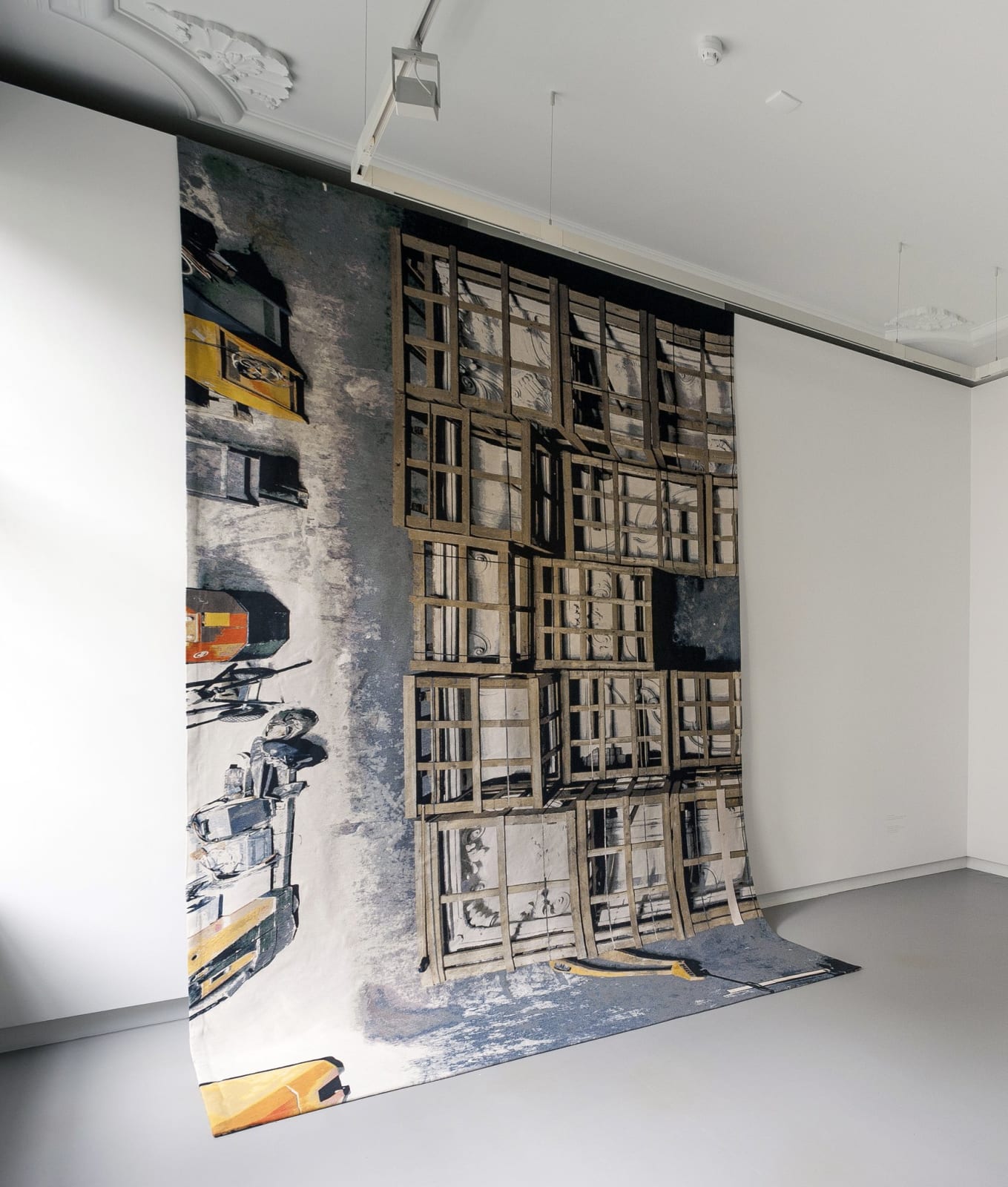
Barbara Visser
Moving Rooms, Baroque Ceiling (Copy), Amsterdam Museum Depot, 2013
tapestry
290 x 500 cm
Copyright The Artist
With a textile piece that covers a whole wall, Barbara Visser reaches back to the first resident of the building that is now the home of de Appel arts centre,...
With a textile piece that covers a whole wall, Barbara Visser reaches back to the first resident of the building that is now the home of de Appel arts centre, the wealthy tobacco importer Jan Agges Scholten, Lord of Aschat (1690-1772). The place where Visser’s tapestry is now to be seen was constructed for him as a richly decorated dining and reception room in the then fashionable Louis XIV style. The room had green panelling with gilded accents and a ceiling lavishly painted with didactic scenes. When the building became a school in 1899 the city council decided that it would be safer if the Green Room was moved to the Stedelijk Museum, where until the 1970s it was displayed as a period room. The panelling presently resides in crates in the depot of the Amsterdam Museum. Visser photographed these crates, and based on these images had a tapestry woven, permitting the period room to return to its original location again in an unexpected form. Her tapestry here lies partially on the floor, a reference to the 18th century custom of reusing expen- sive wall paper and tapestries after a moving house, even if the new space was not really suitable. Visser demonstrates that justice is not always done to historic artefacts in a new location, but also that a different context and use of historical materials (the rolled up tapestry on the floor) can lead to entirely new and unforeseen expressive potential.
— A 2900 x 5000 mm woven tapestry depicting the current condition of a baroque ceiling as it is conserved in the storage of the Amsterdam Museum collection. The tapestry was made for the 2014 exhibition Artificial Amsterdam at De Appel art space, and shown in the same room of the building at Prins Hendrikkade 142 that the ceiling has originally been part of. Further research revealed that the large crates, which are kept so preciously in the storage, are in fact a 19th century copy of the original ceiling: a plaster cast was made as the mounting of the ceiling was too frail. As the motif on the object is symmetrical, the tapestry shows only half of the volume of the ceiling, reassembled in its original order.
— During research and production of this piece, and in the collaboration with the historical Amsterdam Museum, the tension between preservation concerns on one hand, and making our heritage public on the other, surfaced time and time again.
The entire Green Room as it was called, has been on display at the Stedelijk Museum Amsterdam between 1900 and the early 1970’s. Blunt alterations have been made to the space, in order to make it fit for this exhibit.
— A 2900 x 5000 mm woven tapestry depicting the current condition of a baroque ceiling as it is conserved in the storage of the Amsterdam Museum collection. The tapestry was made for the 2014 exhibition Artificial Amsterdam at De Appel art space, and shown in the same room of the building at Prins Hendrikkade 142 that the ceiling has originally been part of. Further research revealed that the large crates, which are kept so preciously in the storage, are in fact a 19th century copy of the original ceiling: a plaster cast was made as the mounting of the ceiling was too frail. As the motif on the object is symmetrical, the tapestry shows only half of the volume of the ceiling, reassembled in its original order.
— During research and production of this piece, and in the collaboration with the historical Amsterdam Museum, the tension between preservation concerns on one hand, and making our heritage public on the other, surfaced time and time again.
The entire Green Room as it was called, has been on display at the Stedelijk Museum Amsterdam between 1900 and the early 1970’s. Blunt alterations have been made to the space, in order to make it fit for this exhibit.